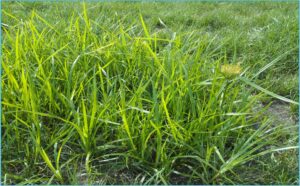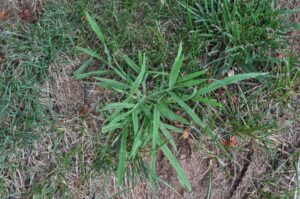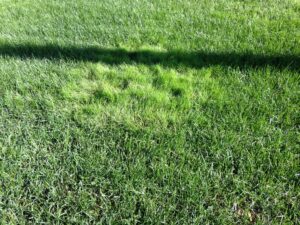Table of Contents
ToggleLast Updated on May 3, 2025
More often than not, the weather is what defines each year in the lawn care industry and 2019 was no exception. The amount of precipitation shaped the issues in lawns this year. In 2018 we saw the highest annual precipitation total ever recorded. In 2019 this continued, and the excessive soil moisture persisted through the end of July. The issues caused by the constant soil moisture stretching into the summer were enough to make any year standout against the norm; however, an additional challenge presented itself when the rainfall abruptly ceased.
The graphic below taken from the website of the ONJSC at Rutgers illustrates the rise and fall in precipitation that occurred over the end of 2018 into 2019.
The Challenge Presented by the Moisture
I know what you’re thinking. “Isn’t rainfall generally considered a good thing for lawns?” Of course rain is a good thing! But like any other good thing, too much of it can cause problems.
Traffic Stress
The soil found in Central Jersey is predominantly clay, which holds moisture very well. Most residents in New Jersey know that even after a moderately heavy rainfall, it can take a few days before the lawn is dry enough to support mower traffic. During the late spring and early summer this year, the grass continued to grow rapidly with all the rain and the soil never really had time to dry. Homeowners had no choice but to mow the lawn during periods where the soil was still soft, which caused a lot of traffic stress damage. Most of the minor ruts were most likely overlooked, but they accumulated all the same and had to be addressed in late August with touch up seeding.
Broadleaf Weed Growth
Spring always consists of excessive growth, and broadleaf weeds are nothing new in April and May each year. By June and July broadleaf weed growth usually become less of an issue as it starts to slow down. However, as heavy rainfall continued through July…so did the weed growth. Homeowners saw a noticeable uptick in the amount of weed growth through the opening of summer. Warm season broadleaf weeds such as spotted spurge was seen in higher volume than normal.
Nutsedge
Unable to chemically prevent, this tall, neon green, grassy weed always presents a challenge once it starts actively growing each summer. Nutsedge prefers wetter soil, so lawns with irrigation and/or poor drainage are typically the only properties that require additional attention for this weed. With this year’s excessive soil moisture, nutsedge treatment was in demand regardless of the properties’ normal qualities.
When Suddenly the Rain Stops
Crabgrass
By the time August rolls around each year there is no crabgrass pre-emergent still active in the soil. The heavy rain at the end of July into August also promoted a lot of crabgrass germination. Then, in mid-August when the rain stopped, the crabgrass was able to dominate areas where lawns became stressed by the drought.
Bentgrass and Rough Bluegrass
The most unacknowledged issue that has steadily been mounting over the last two years is the establishment of undesirable grass species in residential lawns. Grass types such as bentgrass and rough bluegrass that prefer wetter, cooler areas have traditionally been kept in check by the arrival of the dryer, hotter summer months. The extensive soil moisture sustained over the last two years has allowed these plants to actively spread longer than normal and occupy more of the landscape. In the cooler spring months, these grasses reside hidden amongst the green ground cover similar of the other desirable species. However, once conditions change and become warmer and dryer, areas established with these grass types become very evident as they turn brown and look matted down. Once the long-lasting rain ended abruptly in September, large areas where these grasses have taken occupancy in lawns looked very unattractive. While large portions of these areas have since recovered in October and November, they will continue to cause issues for homeowners in the future unless removed from the lawn and established with more desirable turf.
Conclusion
Looking into the future and what to expect for next year, it will be interesting to see if the wetter trend will continue into 2020, or if the weather will present more traditional precipitation levels. Either way, there is sure to be some new challenge brought on by Mother Nature that is bound to become the focus of next year’s entry.





